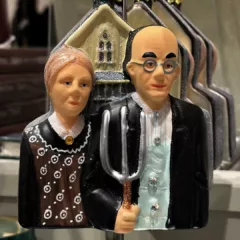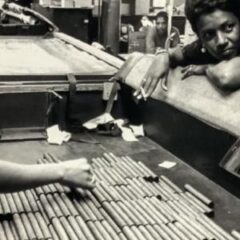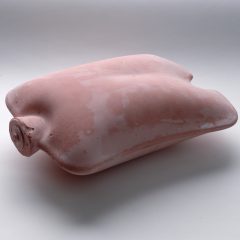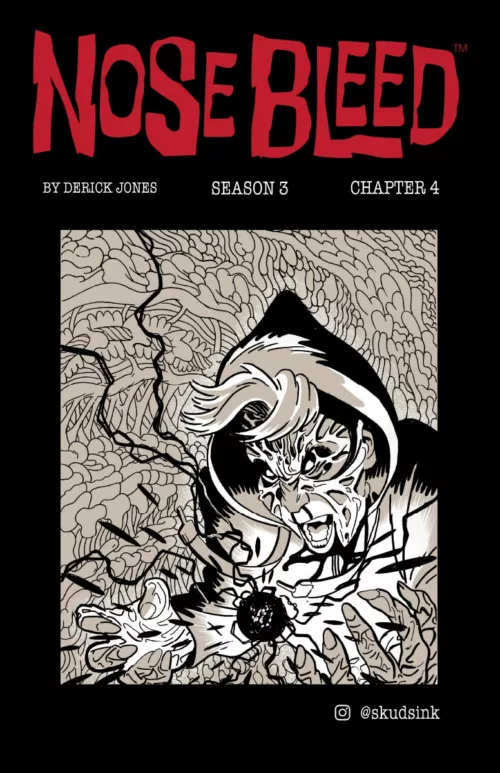There is no more splendid example of European dress as high political propaganda than the ceremonial armor made for the Hapsburg Holy Roman Emperors Maximilian I and Charles V and for Charles’ son, Philip II of Spain. They employed the greatest sculptural metalworkers on the continent and none was greater than the Milanese, Filippo Negroli. His work and that of his finest German contemporaries are well-represented in The Art of Power: Royal Armor and Portraits from Imperial Spain at the National Gallery of Art (NGA), and only in Washington, for the exhibition is not traveling, through November 1, 2009 .
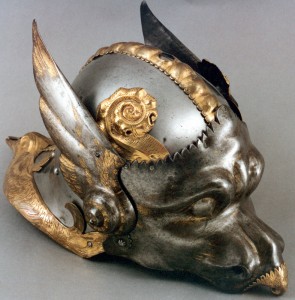
Such armor was rarely intended as practical protection during battle; rather it had a starring role in parades, jousting tournaments and court rituals and was favored attire for official portraits. This was probably the last period in which male dress out-shined that of women; the primal nature of such display can be seen in a woodcut by Hans Burgkmair showing Maximilian and his horse, both armored, with peacock feathers crowning the emperor’s helmet.
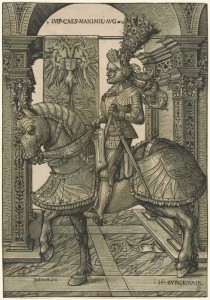
You needn’t have an interest in armor to appreciate this work. Ten years ago I was visiting New York and my husband, a scholar of Italian Renaissance architecture, told me to see an exhibition of Filippo Negroli’s work at the Metropolitan Museum of Art. I had no interest in armor but, trusting him, I went and discovered that Negroli was the Michelangelo of armorers. His imagination was as boundless as his ability to execute his fantastic designs. The forms of the helmets, shoulder pieces and breastplates become foundations for every sort of beast, real or imagined, often with bared teeth.
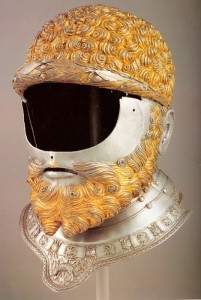
The exhibition includes Negroli’s helmet for Charles V (above) that functions as a portrait of the red-headed emperor complete with a laurel wreath resting on realistic ears and a head and beard of tight curls (made of gold) which turned the emperor into the image of a Greek god. An imperial eagle is perched on another Negroli helmet whose golden beak becomes a visor, and for the famous Burgonet of Charles V (below) two mythological figures hold the elongated moustaches of the bound Turkish captive who is sprawled across the crown. The German armorers were no slackers; the exhibition includes numerous works by various members of the Helmschmid family of Augsburg, the most important German armorers.
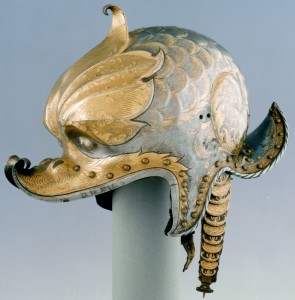
The exhibition includes not only armor for the rulers but for their horses, as well as paintings, splendid tapestries depicting the armored rulers, and that other major work of political propaganda that carried Maximilian’s reputation across Europe: his Triumphal Arch, a gigantic print composed of 42 woodcuts and 2 engravings which traced the emperor’s descent from Hector of Troy, Julius Caesar and Clovis, founder of the French royal dynasty. The only extant set of Renaissance armor in the ancient Roman style (with a skirt of leather) is also on view.
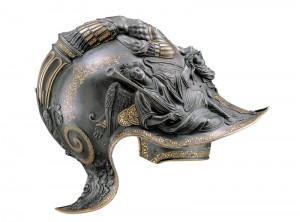
The NGA has done something new for this exhibition: during specified hours they’ve set up a resource table manned by a volunteer, with examples of a helmet, gauntlet, and chain mail that visitors can try on, bits of old tapestry that can be handled and assorted reference books. I think it’s great that they acknowledge the power of touch in learning, even though I suspect they intended the reproduction armor for children. Its hours are M-F 11-1, Sa 2-4 and Su 3-5.


